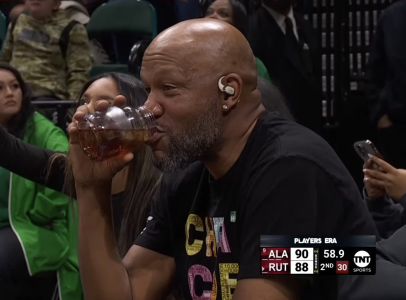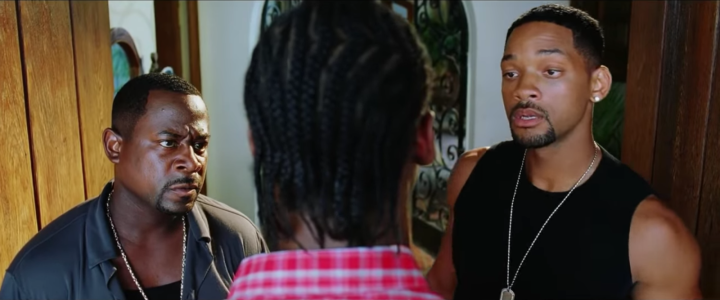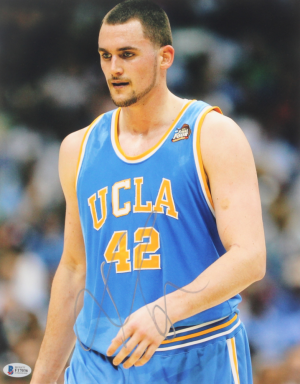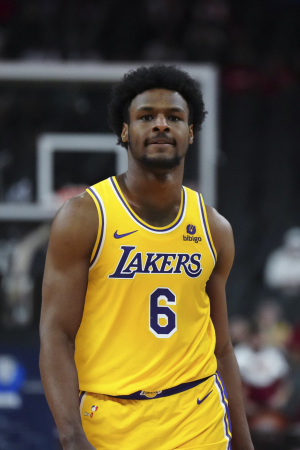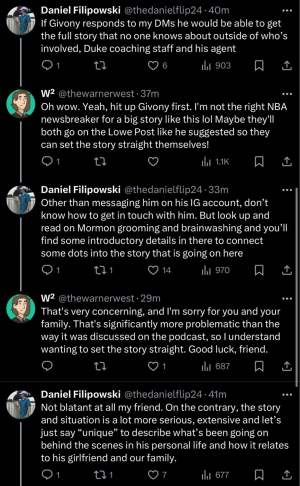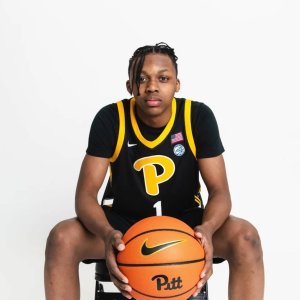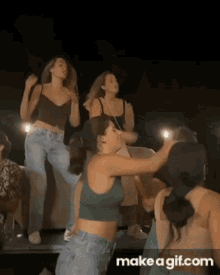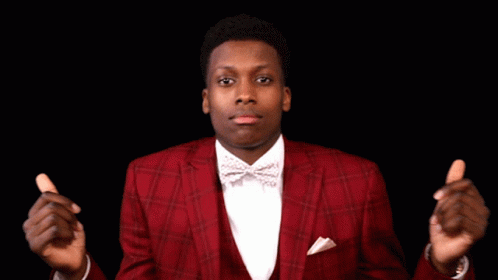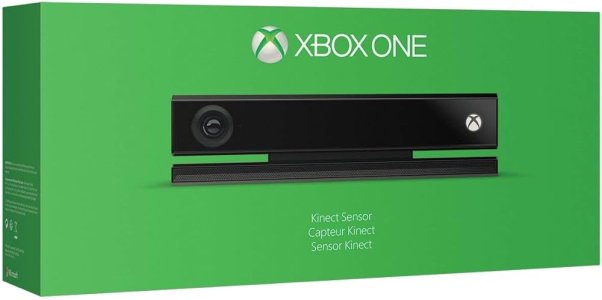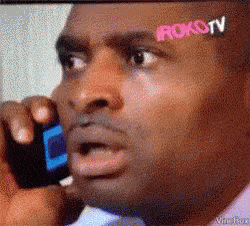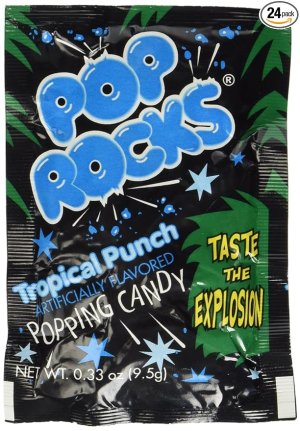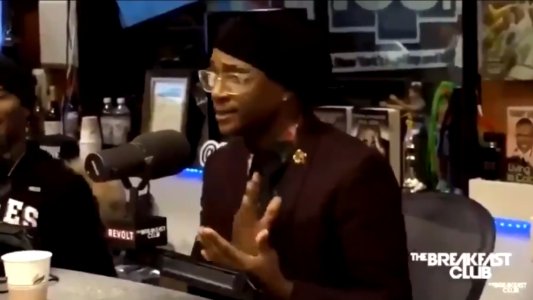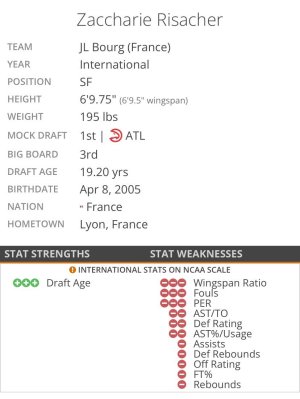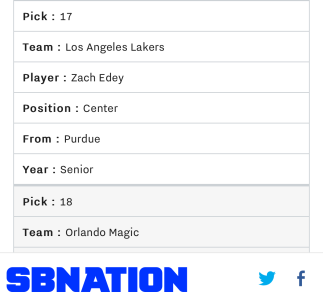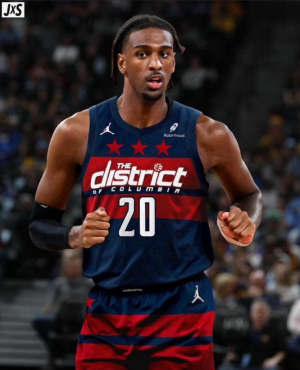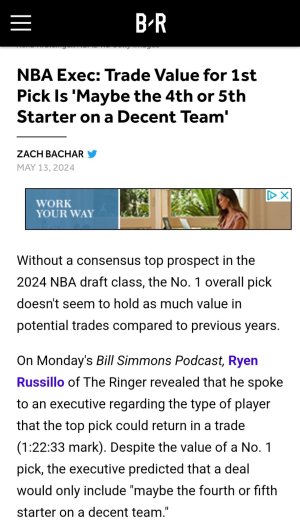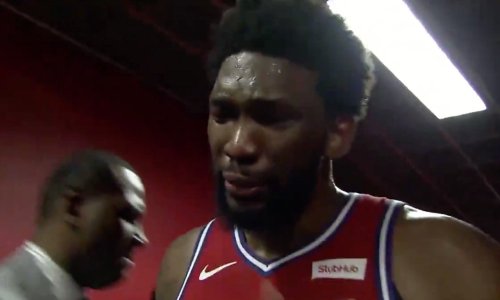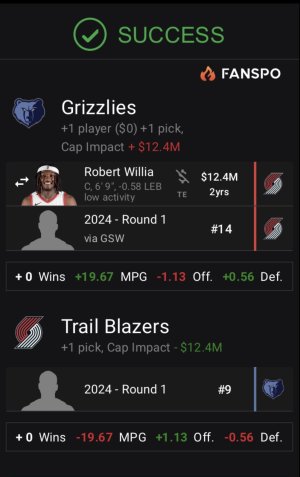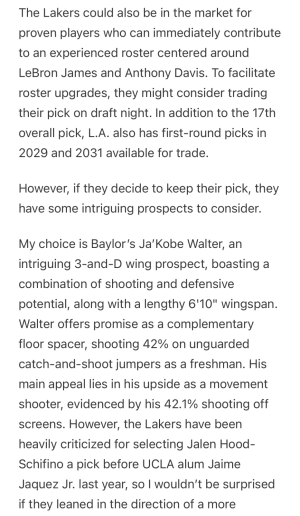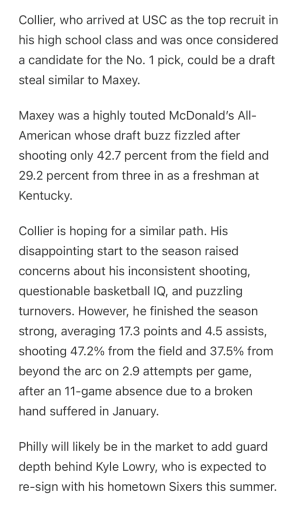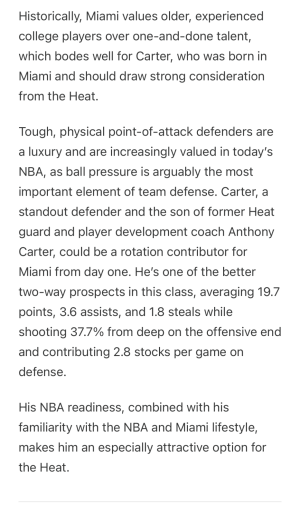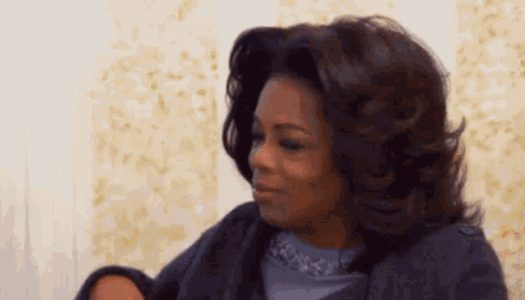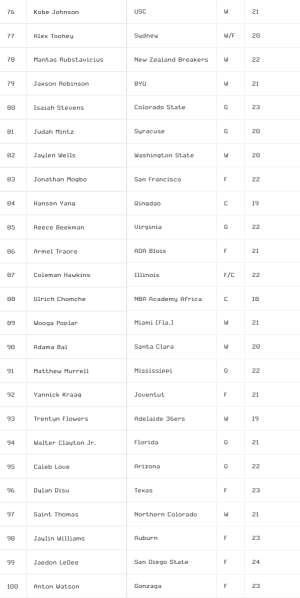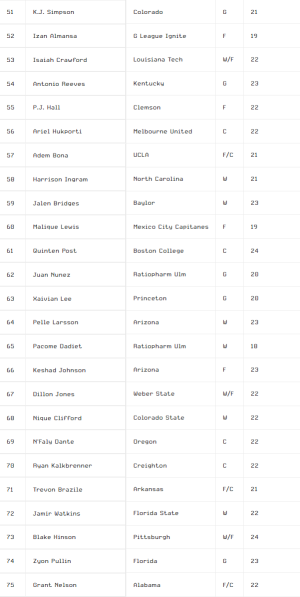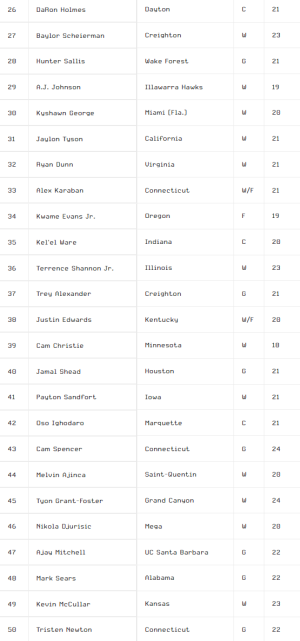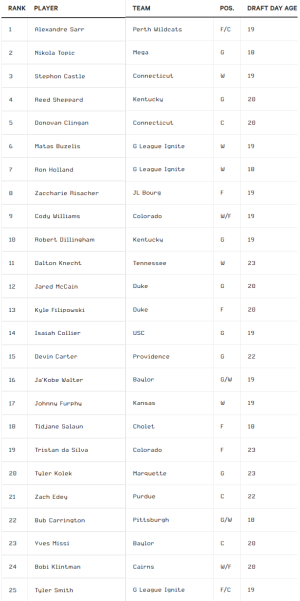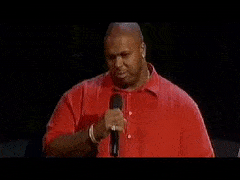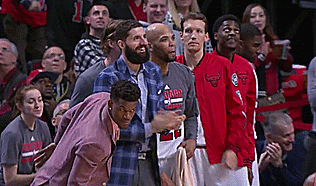- Sep 5, 2010
- 93,367
- 130,199
Rookie of the Week: Jaden Ivey, PG, Detroit
(Note: This section won’t necessarily profile the best rookie of the week. Just the one I’ve been watching.)
With Cade Cunningham out of the lineup the past two games and likely to miss a few more, the spotlight has turned to Ivey. Already a productive starter, the fifth pick in the draft became the Pistons’ lead (only?) shot creator in Cunningham’s absence, hanging a season-high 26 on the mighty Celtics on Saturday.
Ivey’s overall numbers have been solid, especially for a 20-year-old in his first month in the pros out of Purdue. Yes, the Pistons have been awful, but the blame for that falls mostly on an atrocious bench and a Swiss-cheese defense. Ivey bears some responsibility for the latter but has also punched above his weight as a defensive rebounder and a ballhawk (2.1 percent steal rate) on a team that is 29th in defensive rebounding and 29th in forcing turnovers.
His offensive game is the real story, however, and begs the question of whether he can develop it into a star-level, ball-in-hand offensive player to complement (or even supersede) Cunningham. Longtime readers know I’m suspicious of Cunningham in the crazy-high-usage role in which Detroit has cast him, but having Ivey as a perimeter co-pilot is a pretty ideal situation.
The key is that Ivey’s strengths and weaknesses balance Cunningham’s so perfectly — Cunningham is bigger, more methodical and a better shooter, but Ivey has the blast-off quickness that creates advantages and leaves defenses scrambling.
Check out how quickly he leaves RJ Barrett in the dust here, a scene that has replayed over and over again in the season’s opening weeks, especially when he can get downhill to his right:
Ivey still has to refine his finishing package at the rim but has the raw athleticism to make up for it in a lot of instances. Ivey shoots 62 percent in the restricted area, but the real magic is in foul drawing; he ranks in the 98th and 96th percentiles at his position in drawing shooting and non-shooting fouls, respectively, according to Cleaning the Glass. His shooting was seen as a potential problem, and while that certainly hasn’t been a plus, it hasn’t been a glaring weakness either: 35.1 percent from 3 on decent volume and 72.5 percent from the line.
In the meantime, he’s capable of conjuring up sorcery like this when he isn’t fouled:
Ivey still has to see the whole picture and is still too right-hand dominant, however, and that’s the key to whether he tops out as just an interesting ancillary piece or a top-three player on a good team.
Watch here, for instance, as Washington’s Monté Morris takes away his right hand and Ivey settles for a blah pull-up long 2 early in the clock. More opponents will do this as word gets around that you can’t let him get downhill to his right and he’s not going to beat a drop coverage with pull-up 2s.
Ivey isn’t on Cunningham’s level as a passer, but that’s the other part of the equation in his development. Thus far, he hasn’t yet shown the ability to make the advanced read that causes you to rewind the tape but by dint of sheer athleticism is able to access angles that most mortals can’t. Check out this pass to set up a corner 3.
Overall, work remains to be done, but early returns suggest Ivey was worthy of a top-five selection. He is averaging a respectable 24.1 points per 36 minutes on reasonable efficiency (54.4 percent true shooting) amid shooting-starved lineups that constrain his space.
Additionally, the two biggest question marks in his game (3-point shooting and on-the-move decision-making) are the two that tend to improve the most in a young player’s typical trajectory. While the Pistons have disappointed, the most important question for the team this season was whether Ivey could be a long-term piece. That answer appears to be affirmative.
(Note: This section won’t necessarily profile the best rookie of the week. Just the one I’ve been watching.)
With Cade Cunningham out of the lineup the past two games and likely to miss a few more, the spotlight has turned to Ivey. Already a productive starter, the fifth pick in the draft became the Pistons’ lead (only?) shot creator in Cunningham’s absence, hanging a season-high 26 on the mighty Celtics on Saturday.
Ivey’s overall numbers have been solid, especially for a 20-year-old in his first month in the pros out of Purdue. Yes, the Pistons have been awful, but the blame for that falls mostly on an atrocious bench and a Swiss-cheese defense. Ivey bears some responsibility for the latter but has also punched above his weight as a defensive rebounder and a ballhawk (2.1 percent steal rate) on a team that is 29th in defensive rebounding and 29th in forcing turnovers.
His offensive game is the real story, however, and begs the question of whether he can develop it into a star-level, ball-in-hand offensive player to complement (or even supersede) Cunningham. Longtime readers know I’m suspicious of Cunningham in the crazy-high-usage role in which Detroit has cast him, but having Ivey as a perimeter co-pilot is a pretty ideal situation.
The key is that Ivey’s strengths and weaknesses balance Cunningham’s so perfectly — Cunningham is bigger, more methodical and a better shooter, but Ivey has the blast-off quickness that creates advantages and leaves defenses scrambling.
Check out how quickly he leaves RJ Barrett in the dust here, a scene that has replayed over and over again in the season’s opening weeks, especially when he can get downhill to his right:
Ivey still has to refine his finishing package at the rim but has the raw athleticism to make up for it in a lot of instances. Ivey shoots 62 percent in the restricted area, but the real magic is in foul drawing; he ranks in the 98th and 96th percentiles at his position in drawing shooting and non-shooting fouls, respectively, according to Cleaning the Glass. His shooting was seen as a potential problem, and while that certainly hasn’t been a plus, it hasn’t been a glaring weakness either: 35.1 percent from 3 on decent volume and 72.5 percent from the line.
In the meantime, he’s capable of conjuring up sorcery like this when he isn’t fouled:
Ivey still has to see the whole picture and is still too right-hand dominant, however, and that’s the key to whether he tops out as just an interesting ancillary piece or a top-three player on a good team.
Watch here, for instance, as Washington’s Monté Morris takes away his right hand and Ivey settles for a blah pull-up long 2 early in the clock. More opponents will do this as word gets around that you can’t let him get downhill to his right and he’s not going to beat a drop coverage with pull-up 2s.
Ivey isn’t on Cunningham’s level as a passer, but that’s the other part of the equation in his development. Thus far, he hasn’t yet shown the ability to make the advanced read that causes you to rewind the tape but by dint of sheer athleticism is able to access angles that most mortals can’t. Check out this pass to set up a corner 3.
Overall, work remains to be done, but early returns suggest Ivey was worthy of a top-five selection. He is averaging a respectable 24.1 points per 36 minutes on reasonable efficiency (54.4 percent true shooting) amid shooting-starved lineups that constrain his space.
Additionally, the two biggest question marks in his game (3-point shooting and on-the-move decision-making) are the two that tend to improve the most in a young player’s typical trajectory. While the Pistons have disappointed, the most important question for the team this season was whether Ivey could be a long-term piece. That answer appears to be affirmative.
Prospect of the Week: Jarace Walker, 6-8 PF, Fr., Houston
(Note: This section won’t necessarily profile the best prospect of the week. Just the one I’ve been watching.)
College basketball started last week, and with it the bulk of the scouting process heading into the 2023 NBA Draft. While the top three players are likely to come from beyond the NCAA’s ranks (French big man Wembanyama, G League Ignite’s Scoot Henderson and Overtime Elite’s Amen Thompson), that still leaves a wide field for a crop of one-and-dones who have generated considerable excitement in their own right.
Most of last week’s games involving major prospects featured one-sided routs of overmatched opponents, so we’ll get a lot more pertinent data on these players as the season goes on. Unhelpfully, two players scouts are most excited to see are also injured right now (Duke’s Dariq Whitehead and Villanova’s Cam Whitmore).
But in the early going, one player who caught my eye was Walker, a 6-foot-8 forward projected to go 18th on our Sam Vecenie’s most recent mock draft. Walker had a dud of an opener (3-of-14 against Northern Colorado) but bounced back with a monster outing in his second college game, with 22 points on 10-of-14 shooting, eight rebounds, two assists and two steals against St. Joseph’s.
Walker has prototype power forward dimensions, looking every inch of his listed height, and with broad shoulders — a Julius Randle or Jarell Martin-type build. Watching him against St. Joe’s, what impressed me was his ability to handle the ball and make guard-like moves despite his size, including one play when he went full-speed down the lane, sidestepped a charge and dropped in a running righty floater while going to his left.
Walker’s shooting also loomed as a question mark heading into the season; he made two 3s against St. Joe’s and looked comfortable doing it but is 2-of-8 on the year. Obviously, we will need a bit more sample size to come down firmly on either side of this one, but the stroke doesn’t look broken.
Walker will need to continue to produce on the court to move up draft boards because his age works against him a bit. His September 2003 birth month also makes him a bit older than several other one-and-dones — he’ll be 20 before he plays his first NBA game (if he enters the 2023 draft) and is 15 months older than a player teams will likely compare him against, South Carolina’s G.G. Jackson.
Nonetheless, even lottery-bound one-and-dones often struggle in their first few weeks of college play. That Walker hit the ground running and already looks like one of the best players on a national title contender is a huge mark in his favor and makes me wonder if his eventual landing spot will be higher than his current consensus projection in the teens.
(Note: This section won’t necessarily profile the best prospect of the week. Just the one I’ve been watching.)
College basketball started last week, and with it the bulk of the scouting process heading into the 2023 NBA Draft. While the top three players are likely to come from beyond the NCAA’s ranks (French big man Wembanyama, G League Ignite’s Scoot Henderson and Overtime Elite’s Amen Thompson), that still leaves a wide field for a crop of one-and-dones who have generated considerable excitement in their own right.
Most of last week’s games involving major prospects featured one-sided routs of overmatched opponents, so we’ll get a lot more pertinent data on these players as the season goes on. Unhelpfully, two players scouts are most excited to see are also injured right now (Duke’s Dariq Whitehead and Villanova’s Cam Whitmore).
But in the early going, one player who caught my eye was Walker, a 6-foot-8 forward projected to go 18th on our Sam Vecenie’s most recent mock draft. Walker had a dud of an opener (3-of-14 against Northern Colorado) but bounced back with a monster outing in his second college game, with 22 points on 10-of-14 shooting, eight rebounds, two assists and two steals against St. Joseph’s.
Walker has prototype power forward dimensions, looking every inch of his listed height, and with broad shoulders — a Julius Randle or Jarell Martin-type build. Watching him against St. Joe’s, what impressed me was his ability to handle the ball and make guard-like moves despite his size, including one play when he went full-speed down the lane, sidestepped a charge and dropped in a running righty floater while going to his left.
Walker’s shooting also loomed as a question mark heading into the season; he made two 3s against St. Joe’s and looked comfortable doing it but is 2-of-8 on the year. Obviously, we will need a bit more sample size to come down firmly on either side of this one, but the stroke doesn’t look broken.
Walker will need to continue to produce on the court to move up draft boards because his age works against him a bit. His September 2003 birth month also makes him a bit older than several other one-and-dones — he’ll be 20 before he plays his first NBA game (if he enters the 2023 draft) and is 15 months older than a player teams will likely compare him against, South Carolina’s G.G. Jackson.
Nonetheless, even lottery-bound one-and-dones often struggle in their first few weeks of college play. That Walker hit the ground running and already looks like one of the best players on a national title contender is a huge mark in his favor and makes me wonder if his eventual landing spot will be higher than his current consensus projection in the teens.


 or savvy veteran experience (MSU's Keith Appling's near triple-double in 2013) can create false impressions that eventually fade. Sometimes those narratives last -- Jabari Parker backed up his No. 1 pick hype by starting his season off with a bang (27 points, nine rebounds in the 2013 Champions Classic) and rode that momentum all year, while Kentucky's Kevin Knox was the best player on the floor in 2017. Both players' NBA careers ended up fizzling out in disappointing fashion despite hot starts to their college careers.
or savvy veteran experience (MSU's Keith Appling's near triple-double in 2013) can create false impressions that eventually fade. Sometimes those narratives last -- Jabari Parker backed up his No. 1 pick hype by starting his season off with a bang (27 points, nine rebounds in the 2013 Champions Classic) and rode that momentum all year, while Kentucky's Kevin Knox was the best player on the floor in 2017. Both players' NBA careers ended up fizzling out in disappointing fashion despite hot starts to their college careers.




